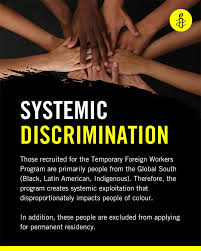
Introduction
The Temporary Foreign Worker Program (TFWP) is an essential component of Canada’s immigration system, designed to fill labor shortages in various sectors. The program allows Canadian employers to hire foreign workers temporarily when qualified Canadians are not available. As the Canadian economy continues to recover and grow post-pandemic, understanding the TFWP is crucial for businesses, foreign workers, and policymakers.
Recent Developments
In 2023, the Canadian government has made significant revisions to the TFWP, emphasizing the need for improved labor market access and worker protections. These updates aim to streamline the application process for employers while ensuring that the rights of foreign workers are firmly protected. Notably, the recent initiatives include faster processing times for applications and increased monitoring of employers to prevent exploitation.
Employment and Social Development Canada (ESDC) has reported a surge in applications for the TFWP since the beginning of the year, reflecting an increasing demand in industries such as agriculture, hospitality, and healthcare. In 2022, Canada’s unemployment rate was noted at 4.9%, which further underscores the necessity of the TFWP in mitigating labor shortages that hinder economic growth.
The Role of the TFWP
The TFWP is vital for filling short-term labor gaps, especially in seasonal industries. For instance, during the harvest season, farmers heavily rely on foreign workers to ensure a successful crop yield, addressing both production needs and labor shortages. Furthermore, hospitality businesses, particularly in tourist regions, depend on foreign staff to maintain service quality and meet increased demand during peak seasons.
Challenges and Criticisms
While the TFWP serves critical functions, it is not without challenges. Critics argue that it can lead to the exploitation of workers who might feel compelled to accept subpar working conditions due to their temporary status. In response, the Canadian government is enforcing stricter regulations to ensure sustainable working conditions and fair wages for temporary foreign workers.
Conclusion
The Temporary Foreign Worker Program remains a vital tool for addressing labor shortages in Canada. As the nation moves toward a more robust labor market recovery, the ongoing reforms are expected to create a fairer and more efficient process for both employers and foreign workers. Looking ahead, watchers in the industry forecast a continued evolution of the TFWP, reflecting the changing needs of the Canadian economy and the labor market.




